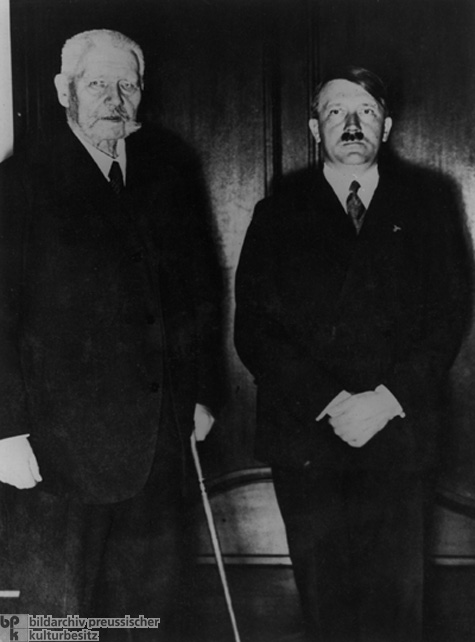













INTRODUCTION | DOCUMENTS | IMAGES | MAPS | EDITOR
|
In 1925, the revered war hero General Field Marshal Paul von Hindenburg (1847-1934) was elected Reich President at age 77. (In 1932, he was re-elected to the same office for a second seven-year term.) Hindenburg’s election meant that a convinced monarchist became head of state in the Weimar Republic. Accordingly, the political center of gravity shifted increasingly to the right. Nonetheless, the years 1924-1928 were still marked by relative stability in political, economic, and social affairs. It was only in 1929 that the incipient worldwide economic depression upset the fragile balance of Germany’s first democracy. The breakdown of the "Grand Coalition" in March 1930 was followed by an ongoing governmental crisis, during whose course Hindenburg made ever greater use of the emergency powers granted to the president by the Weimar Constitution, essentially replacing parliamentary government with a de facto presidential dictatorship. The conservative, elitist Hindenburg had little sympathy for the Nazi party’s vulgar brand of mass politics. He felt a strong personal and political dislike for Adolf Hitler, whom he disparaged as the "Bohemian private." But Hindenburg's aversion to Social Democrats and Communists was even stronger. Moreover, the NSDAP had emerged as the strongest party in the last free Reichstag election on November 6, 1932, securing 33.1 percent of the vote. In January 1933, after the failure of the fourth presidential cabinet in two years, former chancellor Franz von Papen resumed negotiations with Hitler and persuaded President Hindenburg to agree to a new coalition government under Hitler.
© Bildarchiv Preußischer Kulturbesitz |
 print version
print version return to image list
return to image list previous image
previous image
